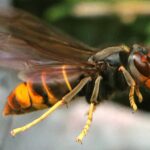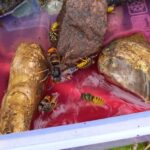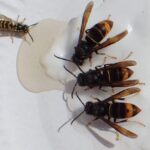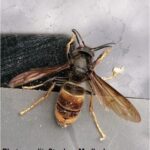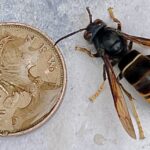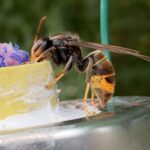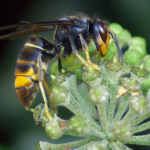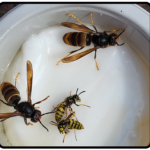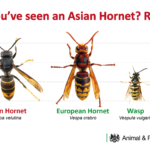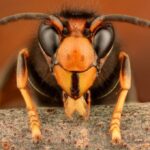Asian Hornet
Help Us Fight the Asian Hornet
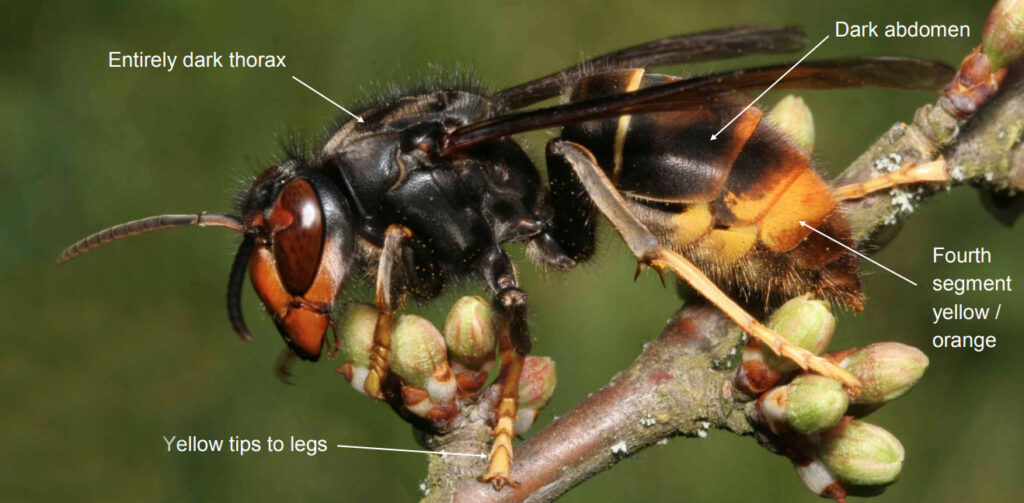
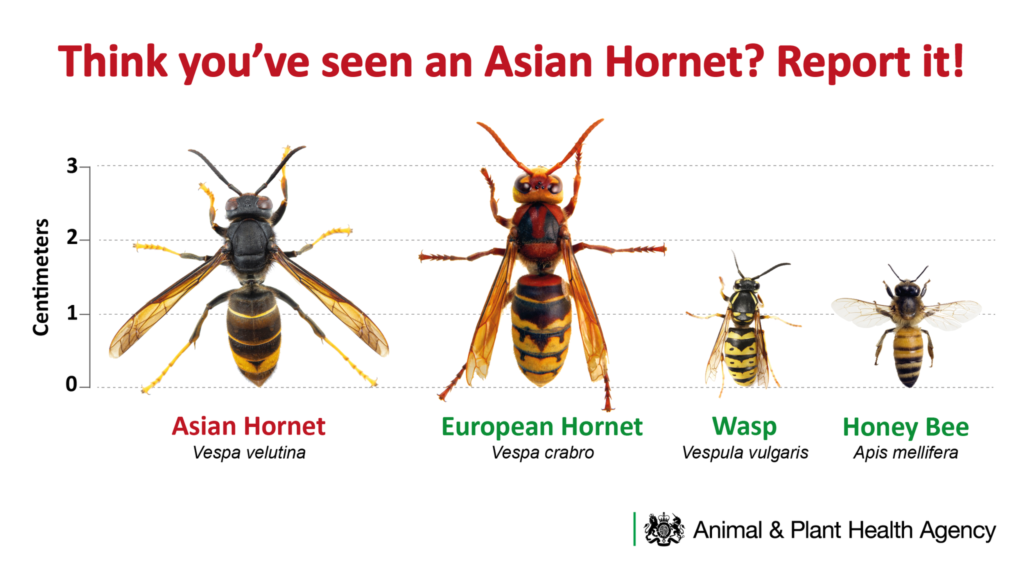
Introduction: The Asian hornet is not native to the UK but was accidentally introduced, likely through imported goods such as plants or wood. Its presence was first confirmed in 2016.
Invasive Species Status: The Asian hornet is considered an invasive species in the UK. It poses a significant threat to local ecosystems and biodiversity due to its predatory behavior, particularly targeting honeybees and other pollinators.
Predation on Honeybees: Asian hornets are known for preying on honeybees, capturing them in flight and at hive entrances. This predation can lead to the weakening and eventual destruction of honeybee colonies.
Public Awareness and Reporting: In response to the Asian hornet invasion, public awareness campaigns were launched to educate people about identifying and reporting sightings of the hornets. Citizens are encouraged to report any potential sightings to local authorities or beekeeping organizations and report to non native species secretariat in first instance the Asian Hornet App (See Below).
Nest Eradication: Specialized teams and beekeepers have been trained to locate and eradicate Asian hornet nests. Early detection and removal of nests are essential to preventing their establishment and spread.
Legislation and Monitoring: The UK government implemented measures to control the spread of Asian hornets, including stricter regulations on the import of certain goods that could carry the hornets. Ongoing monitoring efforts are in place to track the spread and population dynamics of the hornets.
How can you help
Download the Asian hornet app which has photos to assist with identification and can be used to report any sightings:
- Asian Hornet Watch app for iPhone
- Asian Hornet Watch app for Android
- Report to alertnonnative@ceh.ac.uk.
- If you have connections with local gardening groups, garden centres, wildlife groups and trusts etc, please spread the word.
- The Non Native Species Secretariat provides a series of resources free of charge including posters and identification sheets which you can distribute to others.
- Spread the word on social media!
This map shows the spread of the Asian Hornet in the UK.
Asian Hornet FAQ's
Yes, this link will give a up to date list.
We are currently putting together a monitoring team together to monitor the AH locally. See xxxx
Asian hornet nests are commonly located high up in tree tops but can also be found low down, tucked away inside bushes and hedges. In more urban areas they may choose out buildings such as garages and sheds. If the nest is disturbed the hornets are capable of launching a ‘mass attack’ sending out numerous angry workers to chase/sting the animal or human. It has been found that they will ‘chase’ for a distance of about 30metres. To protect yourself should you accidentally disturb a nest, current advice is to cover your head and neck area with your coat or arms and run for at least 30metres.
Download the Asian hornet app which has photos to assist with identification and can be used to report any sightings:
Asian Hornet Watch app for iPhone
Asian Hornet Watch app for Android
Or report using an online form.
Take a photo of the AH preferably using the App or catch a specimen so the Non-Native Species Secretariat can identity it.
To identify the Asian Hornet positively either take a photo or if it is safe to do so, a specimen may be caught, sealed in a jar and placed in a freezer for 48 hours to kill it. Note: It is illegal to catch and release an Asian Hornet
